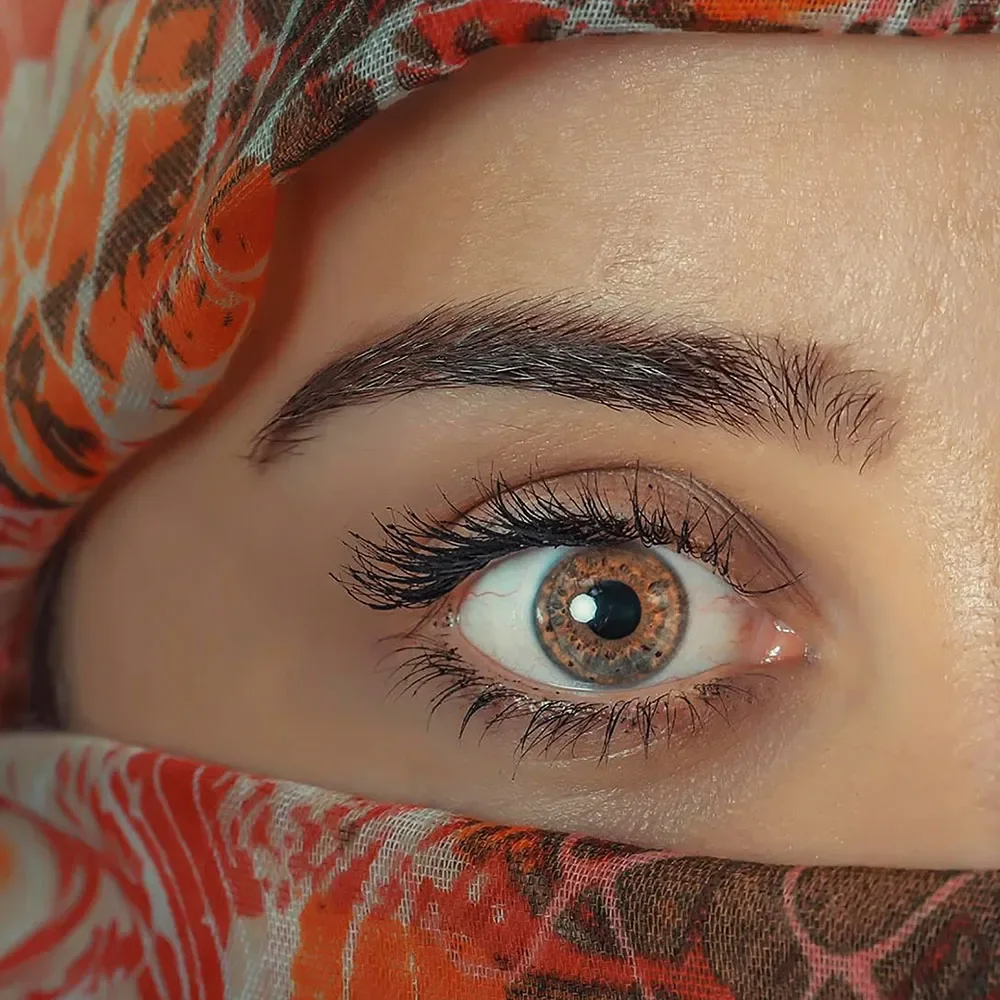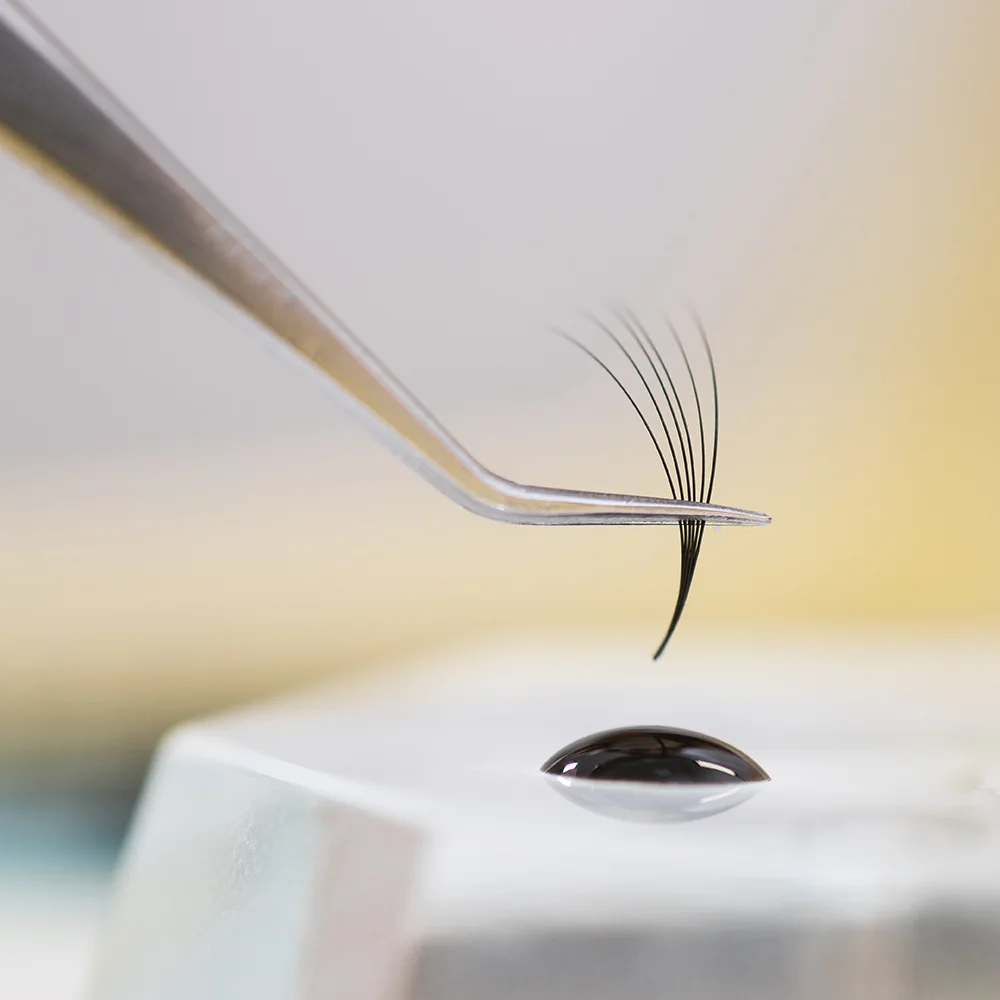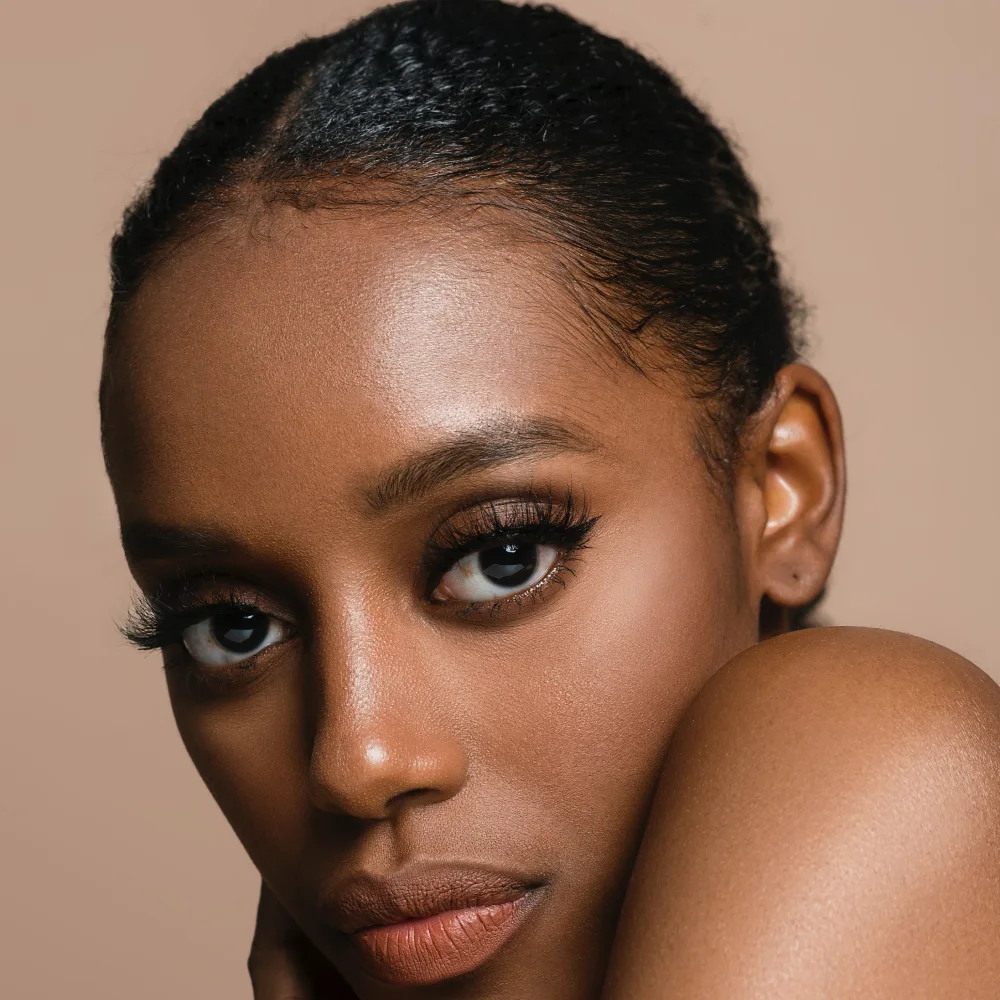Here's what we'll cover
Here's what we'll cover
Here's what we'll cover
When your eyes are red, itchy, and uncomfortable, you may wonder what could be causing these symptoms. Could it be allergies? A cold? Maybe you just got something in your eye. For some people, these symptoms could be a sign of eyelash mites.
What are eyelash mites?
Eyelash mites or Demodex mites are tiny, microscopic mites naturally found on your skin and lashes. Though it sounds gross, they coexist with humans. They feed on skin waste and clean up dead skin cells.
There are two types of mites that can routinely affect skin and eyelashes (Liu, 2010):
Demodex folliculorum (D. folliculorum) is found in the eyelash hair follicle.
The second type, Demodex brevis (D. brevis), tunnels deep into the skin’s oil or sebaceous glands.
These two mites are only found in humans.
Because they occur naturally, you won’t notice them until they cause a problem. If the mite population increases like in an infestation, it may cause uncomfortable symptoms on your eyelids and in your eyes, and may potentially affect your vision if left untreated.
What causes eyelash mite infestations?
Eyelash mites naturally live on our faces, helping to contribute to a healthy human biome by clearing away waste. These mites live for about three weeks from egg stage to adulthood. They can only survive on a living body (Fromstein, 2018).
While eyelash mites are natural and usually don’t cause problems, poor hygiene and skin conditions that create a lot of dead skin, like dandruff or rosacea, raise the risk of eyelash mite infestation when problems can occur (Lui, 2010).
Young people between 20–39 tend to have higher levels of D. brevis mites, while about 84% of people over 60 and all people over 70 years have D. folliculorum mites. People with a weakened immune system, certain skin conditions, and poor hygiene may also have eyelash mite infestations (Li, 2021).
When there’s an uptick in the eyelash mite population, it can cause a condition called Demodex blepharitis, a type of eyelid inflammation.
What are the symptoms of eyelash mites?
The symptoms of eyelash mite infestation are caused by the eyelash mites and bacteria collecting on the eyelashes.
Demodex infestations can cause symptoms in the front (anterior blepharitis) or back (posterior blepharitis) of the eye (Fromstein, 2018).
Symptoms of anterior blepharitis are usually caused by D. folliculorum, affecting the outside rim of the eyelashes and skin, and include (NEI, 2020):
Blurry vision
Crusty or sticky eyelashes
Dry eye
Itchiness
Rough or scaly skin patches around the eyes
More severe symptoms include
Burning sensation in the eye
Abnormal lash growth
Conjunctivitis
Posterior blepharitis symptoms are typically caused by D. brevis that block the meibomian (oil) gland and are found on the inside of the eyelid. Some people may feel as if they have a foreign body in their eye or develop a growth called a chalazion, commonly called a stye, on their eyelids (Fromstein, 2018).
If blepharitis isn’t treated, some people develop conjunctivitis or inflammation in their eyes (Fromstein, 2018). If you are experiencing an outbreak of dermatitis, eczema, or rosacea, an eyelash mite infestation can worsen your symptoms.
How do you diagnose eyelash mites?
If you’re experiencing symptoms, your optometrist or ophthalmologist may use a tool called a slit lamp to look at your lashes and eyelids. It’s important to let them know all of your symptoms because eyelash mite outbreaks can mimic other eye conditions.
How do you treat eyelash mites?
Eyelash mites can be contagious, so it’s important to avoid direct transmission with other people (Liu, 2010).
There are over-the-counter and home remedies that help to control an eyelash mite infestation. The National Eye Institute recommends doing these actions every day while you are symptomatic (NEI, 2020):
1. Use warm compresses to loosen gunk or crusts on your eyelids.
2. Gently scrub the area to remove the crusts and gunk.
3. Clean the eyelids using a mild cleanser like baby shampoo with water.
4. Wash your face and eyelids at least twice daily.
These steps should help clear the infestation within a few days to a week.
Treating chronic eyelash mites
Some people may have chronic eyelash mite infestation, where the symptoms clear up quickly but keep returning. The American Optometric Association recommends these measures to help keep mites under control (AOA, nd):
Follow a consistent eyelid cleaning schedule.
Use artificial tears or lubricating drops if you have dry eyes.
Control dandruff on your scalp using shampoos or other treatments.
Don’t use contact lenses or eye makeup until the infestation is under control.
Throw out any eye makeup used before the infestation.
Some ophthalmologists recommend the following treatments for chronic blepharitis. All of them are safe for everyday use. An ophthalmologist will make a decision together with you based on your case (Portal, 2021):
Avenova is an eyelid cleanser that contains 0.01% hypochlorous acid. You spray Avenova onto a clean cotton round and wipe each eyelid three times, using a new cotton round for each eye. It works almost immediately to relieve inflammation and redness (Avenova, 2021).
Tea-tree oil helps to manage eyelash mites. Older studies used different doses and some irritated the eye or eyelid. Newer formulations isolate the active ingredient, Terpinen-4-ol, and work efficiently and effectively to contain eyelash mites without causing irritation (Navel, 2019).
Blephadex is a once-a-day treatment with tea tree oil, coconut oil, and a gentle eye cleanser to treat eyelash mites. It comes in wipes, warming wipes, and foam (Blephadex, 2021).
Cliradex is another eyelid cleanser with the active ingredient in tea tree oil. It comes in foam or wipes. You use Cliradex twice a day for several weeks (Cliradex, 2021).
If the eyelash mite infestation caused a bacterial infection, you might need prescription steroid eye drops to decrease the inflammation and antibiotic eyelid ointment to curb the infection (Fromstein, 2018).
A new topical treatment, combining Ivermectin and an anti-fungal shows significant promise in treating more stubborn or severe cases of Demodex outbreaks (Avila, 2021).
How do you prevent eyelash mite infestation?
It’s important to practice eyelid hygiene every day. You should clean your eyelids gently when you shower with a soft washcloth or use a gentle over-the-counter eyelid wipe. If you wear eye makeup, don’t share or borrow other people’s eye makeup or eye makeup tools. Clean your eye makeup tools regularly (Fromstein 2018).
Wash your bed linens in hot water and dry them thoroughly in the dryer if you have eyelash mites (Fromstein, 2018).
Although the whole thought of eyelash mites may be off-putting, an infestation is common and easy to treat. Cleaning your eyelids diligently helps prevent the buildup of skin cells that may cause problems. If you notice any discomfort in your eyes, seek prompt treatment from your eye professional. The earlier you treat eyelash mites, the easier the treatment and recovery will be.
DISCLAIMER
If you have any medical questions or concerns, please talk to your healthcare provider. The articles on Health Guide are underpinned by peer-reviewed research and information drawn from medical societies and governmental agencies. However, they are not a substitute for professional medical advice, diagnosis, or treatment.
References
American Optometric Association (AOA). (nd). Blepharitis. Retrieved from https://www.aoa.org/healthy-eyes/eye-and-vision-conditions/blepharitis?sso=y
Avenonva. (2021). Avenova. Retrieved from https://avenova.com/
Ávila, M. Y., Martínez-Pulgarín, D. F., & Madrid, C. R. (2021). Topical ivermectin-metronidazole gel therapy in the treatment of blepharitis caused by Demodex Spp.: a randomized clinical trial. Contact Lens and Anterior Eye, 44 (3), 101326. doi: 10.1016/j.clae.2020.04.011. Retrieved from https://pubmed.ncbi.nlm.nih.gov/32461053/
Blephadex. (2021). Blephadex. Retrieved from https://www.blephadex.com/
Cliradex. (2021). Cliradex. Retrieved from https://cliradex.com/
Fromstein, S. R., Harthan, J. S., Patel, J., & Opitz, D. L. (2018). Demodex blepharitis: clinical perspectives. Clinical Optometry, 10,
doi: 10.2147/OPTO.S142708. Retrieved from https://www.dovepress.com/demodex-blepharitis-clinical-perspectives-peer-reviewed-fulltext-article-OPTO
Li, J., Luo, X., Liao, Y., & Liang, L. (2021). Age differences in ocular demodicosis: Demodex profiles and clinical manifestations. Annals of Translational Medicine, 9 (9). doi: 10.21037/atm-20-7715. Retrieved from https://atm.amegroups.com/article/view/65995/html
Liu, J., Sheha, H., & Tseng, S. C. (2010). Pathogenic role of Demodex mites in blepharitis. Current Opinion in Allergy and Clinical Immunology, 10 (5), 505–510. doi: 10.1097/ACI.0b013e32833df9f4. Retrieved from https://pubmed.ncbi.nlm.nih.gov/20689407/.
National Eye Institute (NEI). (2020). Blepharitis. National Institute of Health: National Eye Institute. Retrieved from https://www.nei.nih.gov/learn-about-eye-health/eye-conditions-and-diseases/blepharitis
Navel, V., Mulliez, A., d’Azy, C. B., Baker, J. S., Malecaze, J., Chiambaretta, F., & Dutheil, F. (2019). Efficacy of treatments for Demodex blepharitis: a systematic review and meta-analysis. The Ocular Surface, 17 (4), 655-669. doi: 10.1016/j.jtos.2019.06.004. Retrieved from https://pubmed.ncbi.nlm.nih.gov/31229586/
Portal, M., Burkat, C, Reddy, D., & Yen, M. T. (2021). Demodex infestation. American Academy of Ophthalmology. Retrieved from https://eyewiki.org/Demodex_Infestation












